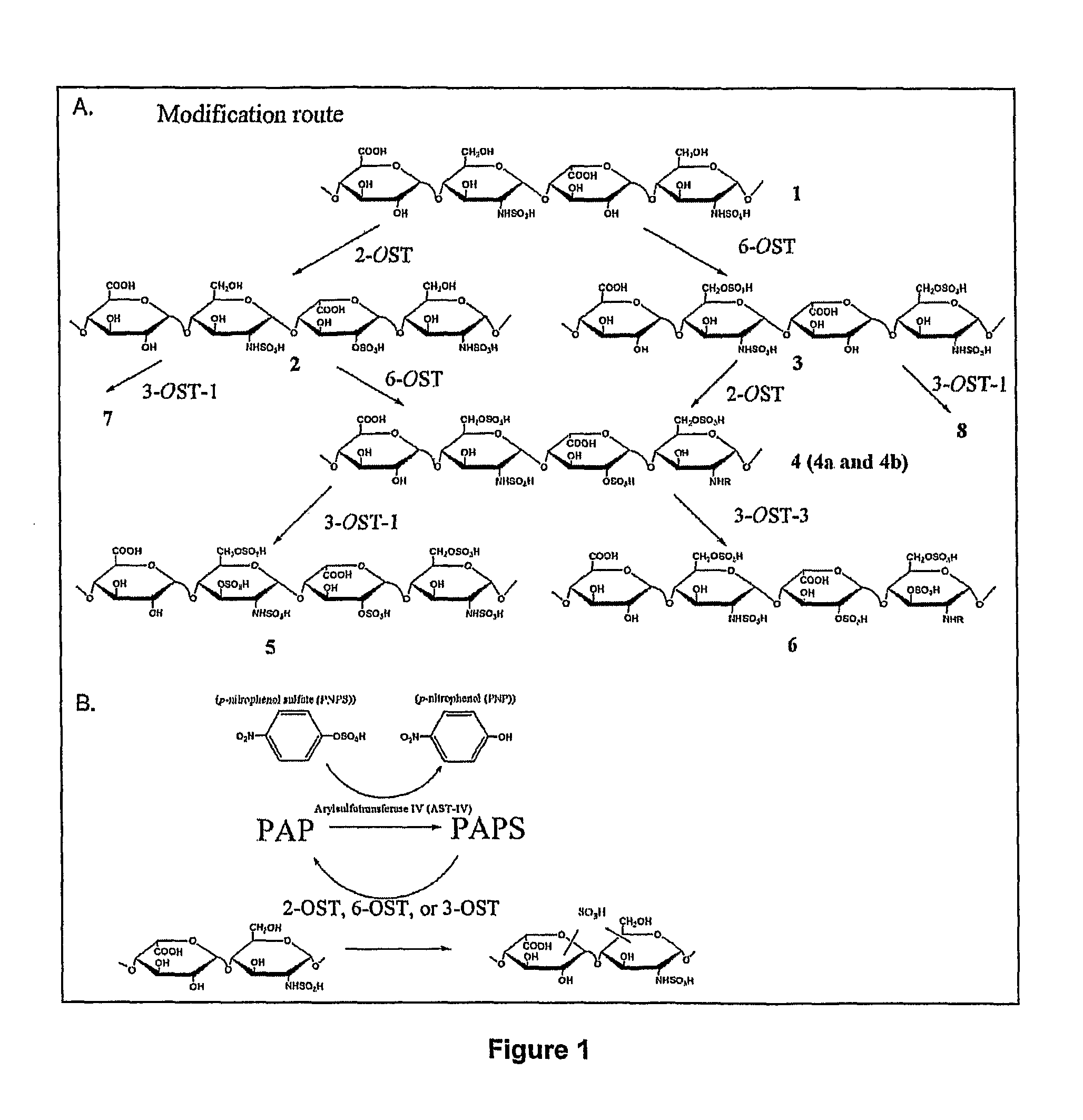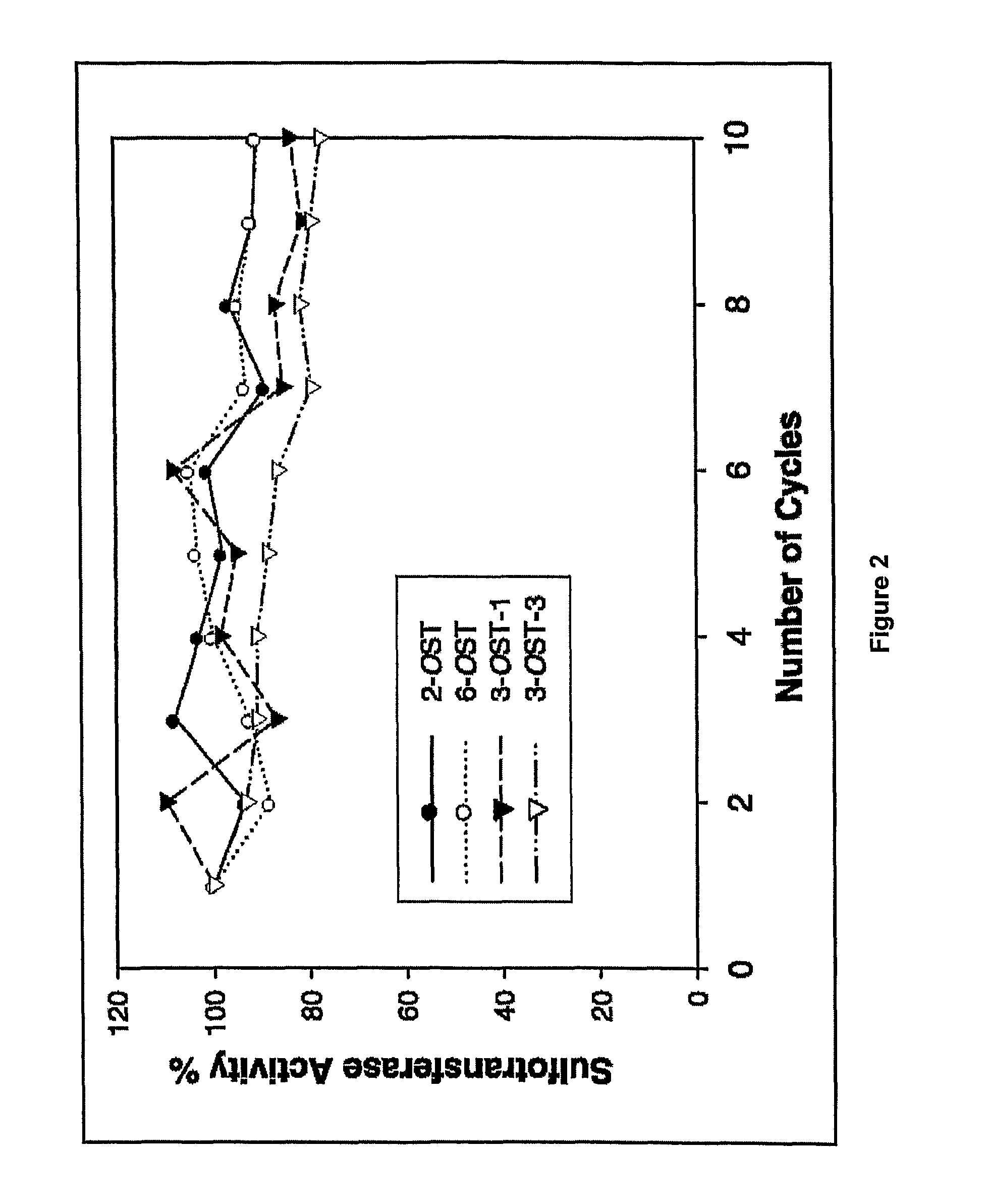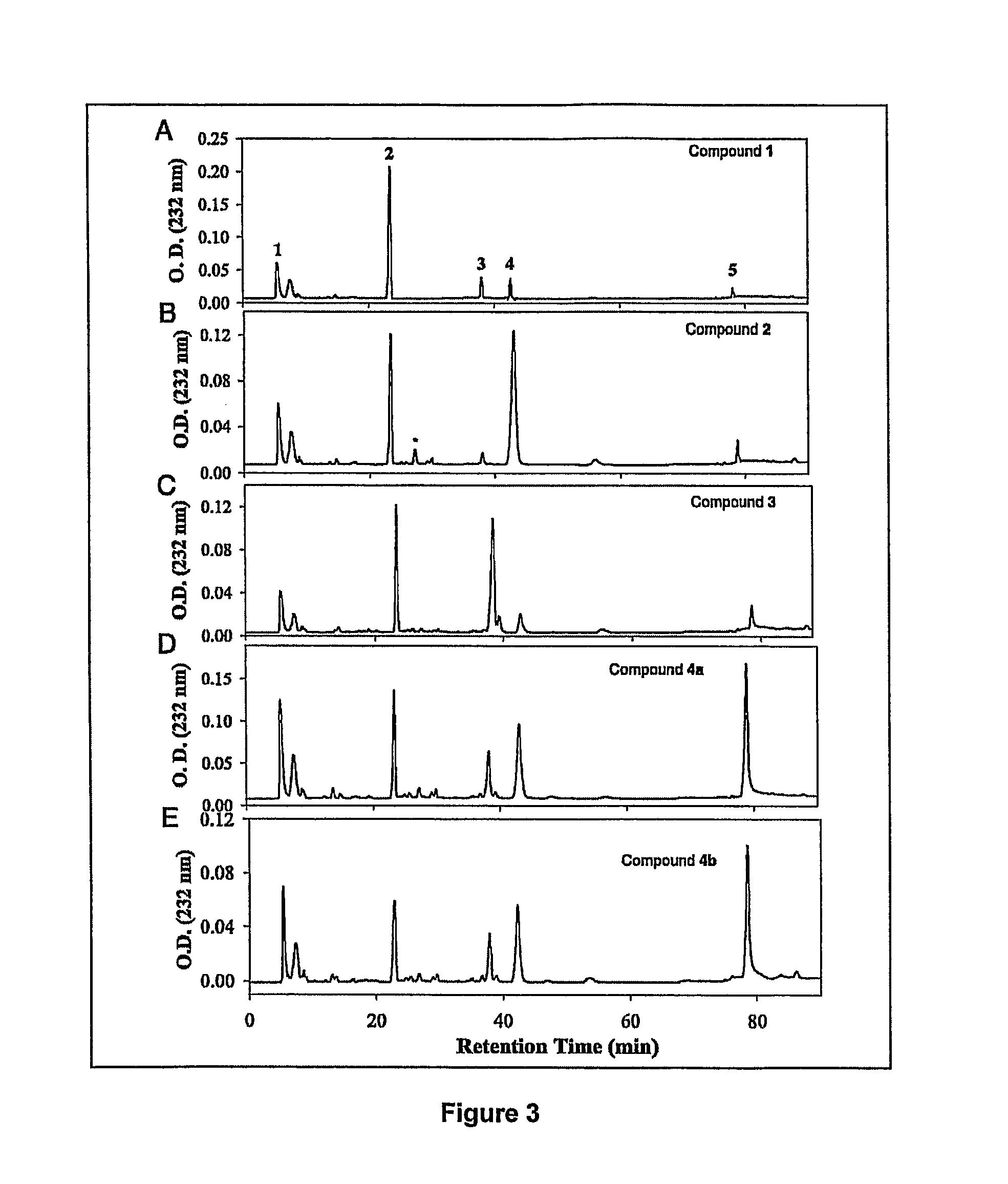Enzymatic synthesis of sulfated polysaccharides
a technology of sulfated polysaccharides and enzymes, applied in the field of sulfated polysaccharides, can solve the problems of inability to generate most larger oligosaccharide structures, difficult to synthesis total heparin and hs oligosaccharides, and inability to synthesis alone to generate most larger oligosaccharides, etc., to achieve the effect of reducing the inhibitory effect of pap
- Summary
- Abstract
- Description
- Claims
- Application Information
AI Technical Summary
Benefits of technology
Problems solved by technology
Method used
Image
Examples
example 1
Development of an Efficient Enzymatic Synthesis of Sulfated Polysaccharides
[0105]Expression of HS Sulfotransferases in E. coli. The presently disclosed subject matter provides methods for synthesizing biologically active HS, such as for example FGF-binding HS (e.g., compound 4, including 4a and 4b), AT-binding HS (e.g., compound 5), and herpes simplex virus gD-binding HS (e.g., compound 6). See FIG. 1A. Four enzymes, including 2-OST, 6-OST, 3-OST-1, and 3-OST-3, were utilized for the syntheses of these particular targets. Bacterial expressed 3-OST-1 and 3-OST-3 can exhibit substrate specificity and specific enzymatic activity comparable with those of their counterparts expressed in insect cells (Moon et al. (2004) J. Biol. Chem. 279, 45185-45193; Edavettal et al. (2004) J. Biol. Chem. 279, 25789-25797). Expression of the catalytic domains of 2-OST and 6-OST was also achieved in relatively high yield by preparing a fusion protein with MBP and 2-OST or 6-OST in Rosetta-gami B cells. B...
example 2
Structural Characterization of Synthesized Polysaccharides
[0108]Disaccharide Analysis of the Polysaccharides. Synthesized polysaccharide intermediates were digested with a mixture of heparin lyases, and the resulting disaccharides were analyzed using RPIP-HPLC (FIG. 3). As expected, analysis of compound 1 showed a disaccharide component of the structure of ΔUA-GlcNS (disaccharide 2), residual unsulfated disaccharide, Δ UA-GlcNAc (disaccharide 1), and small amounts of sulfated disaccharides (disaccharides 3-5) due to incomplete chemical desulfation (FIG. 3A and Table 2). The modification by 2-OST elevated the level of ΔUA2S-GlcNS (disaccharide 4) by about 5-fold (FIG. 3B and Table 2), confirming the structure of compound 2. Analysis of compound 3 afforded a 7-fold increase in the level of the disaccharide ΔUA-GlcNS6S (disaccharide 3) compared with compound 1, consistent with 6-OST-catalyzed modification (FIG. 3C and Table 2). The level of trisulfodisaccharide, ΔUA2S-GlcNS6S (disaccha...
example 3
Determination of the Biological Activities of the Synthesized Polysaccharides
[0115]The Binding of the Polysaccharides to AT and FGF2. Characterization of the affinities of AT to heparin and enzymatically modified heparin derivatives were performed by SPR. A two-state reaction model was applied to the SPR study of AT and polysaccharide interactions using BlAevaluation™ Software (Biacore Life Sciences, Uppsala, Sweden) for curve fitting analysis. None of the derivatives with the exception of the 2,6,3-O-sulfopolysaccharide (5) and heparin had high affinity to AT. The binding constant (KD) for the binding of compound 5 to AT was determined to be 170 nM, which is very similar to that of heparin (75 nM). The binding affinity of FGF2 to the synthesized polysaccharides was also estimated. Compound 1 showed no interaction with FGF2, whereas compounds 4a and 4b showed the identical binding affinity to FGF2 at a Kd of 35 nM, which is similar to heparin (22 nM) and is consistent with the value...
PUM
 Login to View More
Login to View More Abstract
Description
Claims
Application Information
 Login to View More
Login to View More - R&D
- Intellectual Property
- Life Sciences
- Materials
- Tech Scout
- Unparalleled Data Quality
- Higher Quality Content
- 60% Fewer Hallucinations
Browse by: Latest US Patents, China's latest patents, Technical Efficacy Thesaurus, Application Domain, Technology Topic, Popular Technical Reports.
© 2025 PatSnap. All rights reserved.Legal|Privacy policy|Modern Slavery Act Transparency Statement|Sitemap|About US| Contact US: help@patsnap.com



